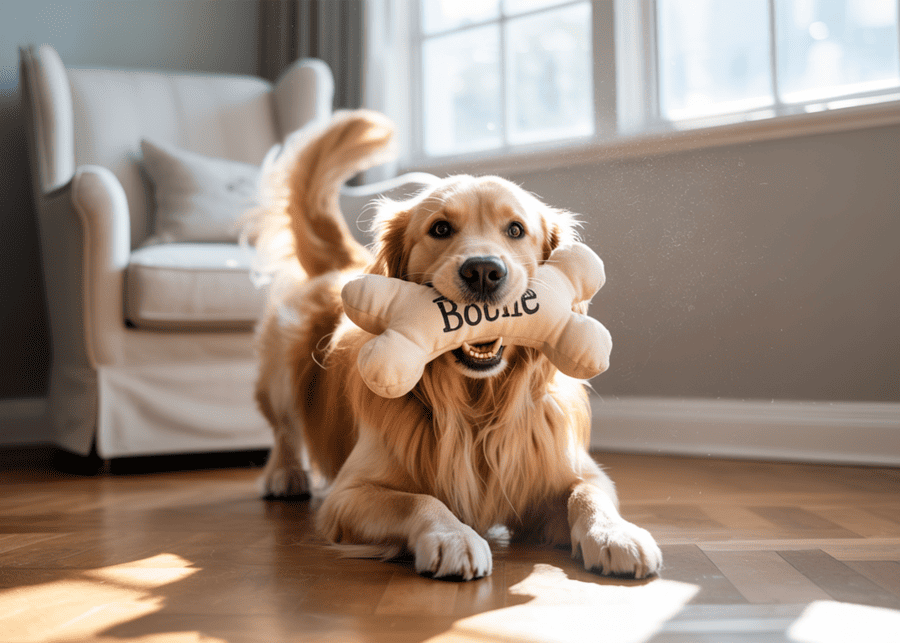Worried your dog gets destructive when you leave? Some dogs can’t handle 30 minutes alone, while others are fine for hours. Let’s explore why and how to help them.
A dog’s ability to self-entertain is a mix of its breed, personality, training, and environment. Natural independence, positive early life experiences, and the right kind of mental stimulation are key. With proper training and toys, you can help your dog happily spend more time alone.
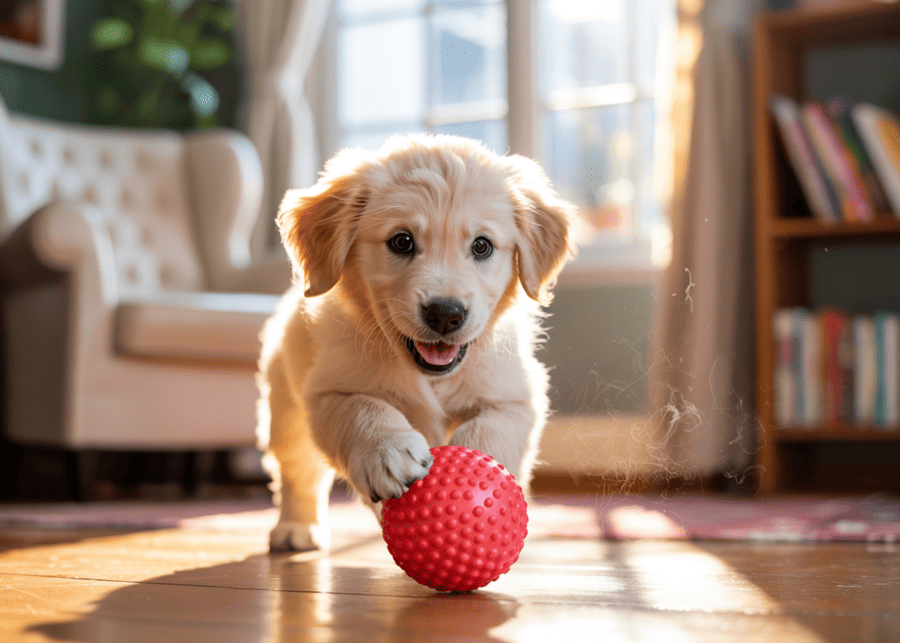
As someone who has been in the pet supply industry for over a decade, I talk to brand owners and retailers about this all the time. They want to create products for dogs that spend time alone. The truth is, a dog’s independence isn’t based on one single thing. It’s a combination of several important factors that work together. Understanding them is the first step to helping your dog feel secure and content when you’re not there. Let’s break down what really makes a difference.
What Are the Key Personality Traits That Determine a Dog’s Self-Entertainment Ability?
Ever wonder if your dog is just naturally clingy? A dog’s personality plays a huge role in how they handle being alone. Let’s see what specific traits matter the most.
The most important traits are confidence, curiosity, and a low need for constant human direction. Dogs that are naturally confident and curious are more likely to explore their environment and engage with toys on their own, finding entertainment without needing you to start the game.

In my experience manufacturing pet products, we see how these personalities interact with different toys. It’s not just about keeping a dog busy; it’s about matching the activity to their core nature. A dog’s personality isn’t set in stone, but understanding its foundation is crucial.
The Confident Explorer vs. The Anxious Follower
A confident dog sees an empty house as an opportunity to patrol, nap in a sunbeam, or investigate a new toy. An anxious dog sees it as a sign of abandonment. This confidence is often built in puppyhood but can be nurtured in adult dogs through positive reinforcement and predictable routines. They trust that you will return, so they don’t panic when you leave.
The Curious Mind
Curiosity is a powerful driver for self-entertainment. A curious dog will actively engage with a puzzle toy, trying to figure out how to get the treats. They will bat around a new ball to see what it does. This trait is vital because it means the dog has an internal motivation to play. We design toys specifically to spark this curiosity, using different textures, sounds, and challenges to keep them mentally engaged.
Independence Level
Some dogs are simply more independent. They enjoy human company but don’t need it every second of the day. Others are "velcro dogs" who feel a deep need to be close to their person.
| Trait of an Independent Dog | Trait of a Dependent Dog |
|---|---|
| Confident and calm | Anxious and restless |
| Curious about objects | Seeks constant attention |
| Enjoys solo play/naps | Follows you everywhere |
| Low-level separation anxiety | Prone to panic when alone |
How Do Different Dog Breeds Naturally Vary in Their Independence Levels?
Do you think your dog’s breed might be why they hate being alone? You’re probably right. Breed history gives us big clues about their natural independence and what they were designed to do.
Breeds developed for independent jobs, like livestock guardians or hounds, often handle solitude better. They were bred to think for themselves. In contrast, companion breeds, like many toy dogs, were bred specifically for human contact and can struggle more when left alone.
When we work with our clients from North America, Australia, or Europe, we often discuss breed tendencies. A client selling to owners of herding dogs might need more durable, challenging toys than a client focused on companion breeds. Breed isn’t everything, but it’s a very important piece of the puzzle.
Bred for the Job: The Independents
Many working breeds were developed to perform tasks for long hours without direct human supervision. Think about a Great Pyrenees guarding a flock or a Beagle tracking a scent. These dogs had to be self-reliant and make their own decisions. This history often translates into a dog that is more comfortable with its own company.
Bred for Companionship: The Socialites
On the other end of the spectrum are breeds created simply to be pets. From ancient Chinese lap dogs to modern French Bulldogs, their primary "job" is to be with their people. Their genetics prime them to seek out human interaction, so being alone can feel unnatural and stressful for them.
| Independence Level | Breed Examples | Original Purpose |
|---|---|---|
| High | Akita, Great Pyrenees | Guarding, working independently |
| Medium | Beagle, Basset Hound | Scent tracking, following a trail |
| Low | Chihuahua, Cavalier | Companion, lap dog |
This doesn’t mean a Chihuahua can never be left alone, but it does mean you may need to work harder on building its confidence compared to an Akita.
Why Do Some Dogs Develop Separation Anxiety While Others Thrive Alone?
Is your heart breaking over your dog’s very real panic when you leave? It’s a complex and serious issue. Understanding where it comes from is the first step to helping them.
Separation anxiety often comes from a mix of genetics, a major life change like being rehomed from a shelter, a lack of early training on how to be alone, or an overly dependent relationship. Dogs that thrive alone usually learned early on that solitude is safe and temporary.
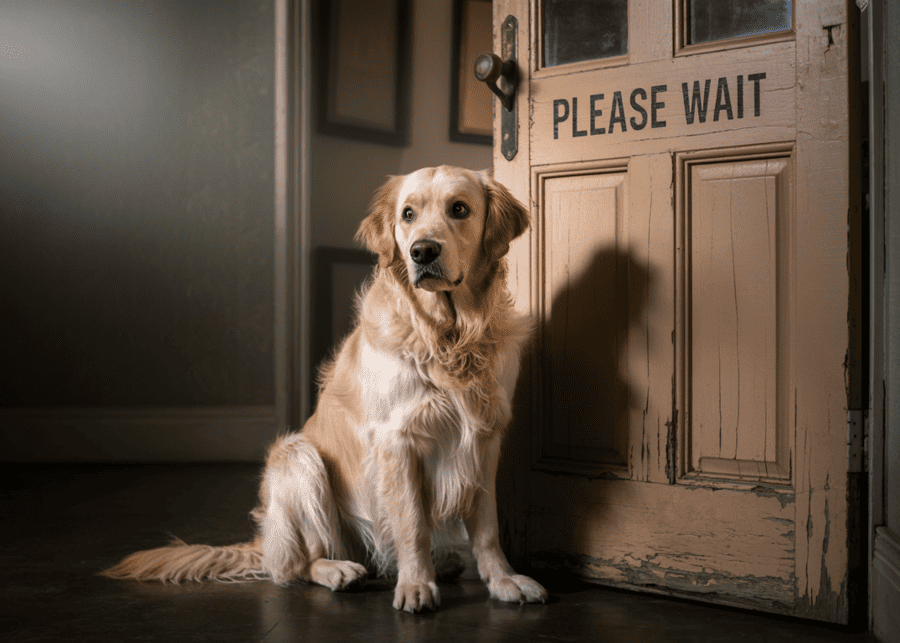
It’s important to understand that separation anxiety is a genuine panic disorder, not just bad behavior. The dog isn’t trying to punish you for leaving. It is truly terrified. This is a crucial distinction for any dog owner or pet professional to make.
The Impact of Past Experiences
A dog’s history plays a massive role. Dogs who have been abandoned, spent time in a shelter, or experienced a sudden change in their family structure are more prone to developing separation anxiety. These traumatic events can break their trust that their people will always come back. A stable, predictable environment is key to building that trust back up.
The Owner-Dog Bond
Sometimes, we accidentally create the problem. The so-called "pandemic puppies" are a perfect example. They spent 24/7 with their owners from a young age and never learned that being alone is a normal part of life. Creating a dog that is completely dependent on you for all its comfort and entertainment can backfire when you need to return to the office.
Genetics and Predisposition
Just like with people, some dogs are simply born with a more anxious temperament. They may be more sensitive to changes in their environment and more likely to form hyper-attachments to their owners. While you can’t change their genetics, you can use training and management techniques to help them cope with their feelings and build resilience.
What Are the Warning Signs That Your Dog Needs More Mental Stimulation?
Is your dog’s "bad behavior" actually just a desperate cry for help? Boredom often looks like disobedience. It’s important to recognize the signs that your dog’s brain is underworked and needs a real challenge.
The most common signs are destructive chewing on things like furniture, excessive barking, restless pacing, and constantly nudging you for attention. A bored dog will invent its own jobs, and you probably won’t like the jobs they choose.
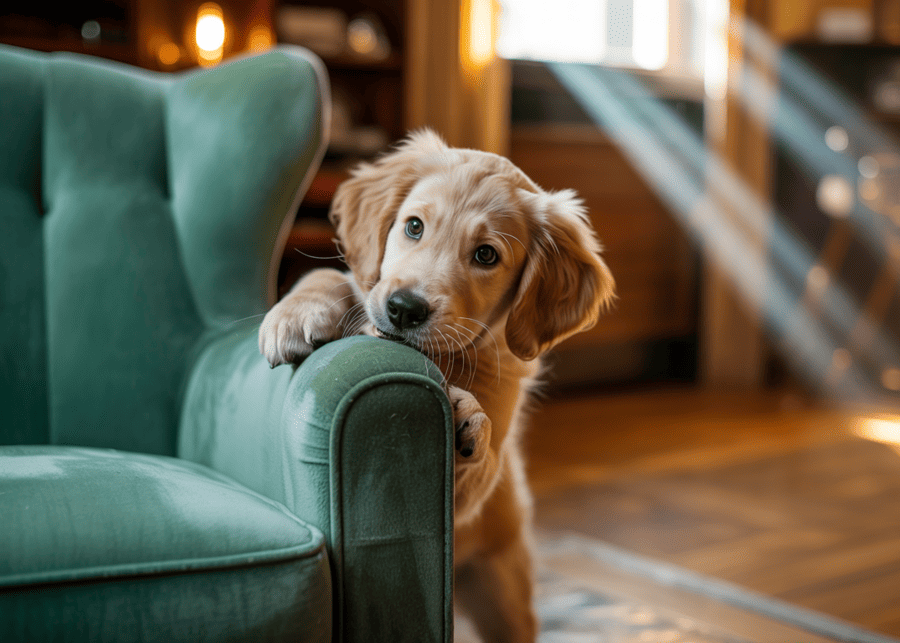
As a manufacturer, we hear this story all the time. Clients come to us because their customers need solutions for this exact problem. They need products that don’t just occupy a dog’s mouth, but actively engage its brain.
Destructive Behaviors
If your dog is chewing on table legs, ripping up cushions, or digging at the carpet, it’s not being spiteful. It’s trying to relieve stress and boredom. The physical act of chewing and shredding is mentally stimulating for a dog. Your job is to redirect that natural impulse onto appropriate items, like a durable chew toy or a puzzle.
Vocal and Attention-Seeking Signs
A dog that barks, whines, or howls for long periods when alone is often expressing distress and boredom. Similarly, a dog that constantly paws at you, drops a toy in your lap, or barks at you when you’re home is clearly saying, "I’m bored! Play with me!" They lack the ability to settle down on their own.
Physical Restlessness
Does your dog pace around the house, unable to settle in one spot for more than a few minutes? This physical restlessness is a strong indicator of unspent mental and physical energy. They have an engine that’s running with nowhere to go. Providing structured activities can help them channel that energy productively.
How Can You Gradually Increase Your Dog’s Alone Time Without Causing Stress?
Are you scared to even leave the room without your dog getting upset? Building their tolerance for being alone is a slow process, but it is possible. Let’s walk through the steps to do it safely.
Start with very short departures, even just for a few seconds, and slowly increase the time. Make your departures and arrivals very calm and boring. Most importantly, give your dog a high-value, long-lasting toy that they only get when you are gone.
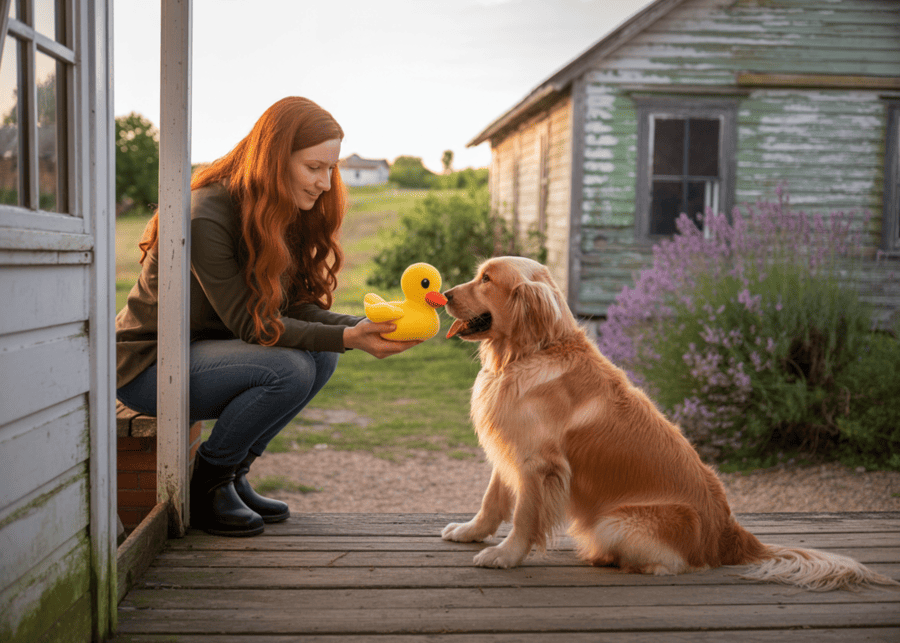
This process is all about changing your dog’s emotional response to you leaving. You want to transform "Oh no, they’re gone!" into "Oh good, they’re gone! Now I get my special toy!" This is a powerful technique that we recommend to brands that are developing enrichment products.
Step 1: Break the Routine
Your dog knows the signs you’re about to leave: you pick up your keys, put on your shoes, grab your bag. These actions can trigger their anxiety before you even open the door. Practice doing these things without leaving. Pick up your keys and then sit on the sofa. Put on your shoes and then watch TV. This breaks the connection between those cues and the stress of your departure.
Step 2: Start Small and Build Up
Begin by leaving for just 30 seconds. Go out the door, come back in, and be very calm. Don’t make a big fuss. Gradually increase the time: one minute, then five minutes, then ten. It’s very important not to push your dog too far, too fast. If they show signs of stress, you’ve gone too long. Go back to a shorter duration where they were successful and build up more slowly.
Step 3: Create Positive Associations
This is the most critical step. Find a toy that your dog absolutely loves—a puzzle feeder filled with their favorite treats or a special long-lasting chew. Give it to them right before you walk out the door, and take it away as soon as you get back. This teaches them that your absence is what makes this amazing thing appear.
What Types of Toys and Activities Best Support Independent Play?
Are you leaving your dog with the right tools for the job? Not all toys are created equal for solo play, especially when you’re gone for a full 8-hour workday. Let’s find the best options.
The best toys for dogs while at work are durable, engaging, and safe for unsupervised use. This includes puzzle feeders, long-lasting chew toys, and automatic interactive toys. These are specifically designed to provide long-lasting dog entertainment and mental stimulation.
This is our specialty. We help brands design and manufacture "8-hour dog toys" that are perfect for working dog parents. The key is to have a strategy that provides different types of engagement throughout the day.
Your 8-Hour Workday Toy Strategy
You can’t just leave one toy and expect it to last all day. It’s better to create a rotation or a series of activities to prevent boredom.
| Timeframe | Recommended Toy Type | Why It Works |
|---|---|---|
| First 2-3 Hours | Puzzle Feeder / Lick Mat | Uses their breakfast to provide a mental workout. Licking is also a self-soothing behavior that reduces anxiety as you leave. |
| Mid-Day (4-6 Hours) | Durable Chew Toy | Redirects natural chewing instincts onto a safe object. A high-quality, long-lasting chew can keep them occupied for hours. |
| All Day (8 Hours) | Automatic Interactive Toy | These toys have motion sensors and can "wake up" when the dog approaches, re-engaging them long after you’ve gone. They are great for breaking up the long, quiet hours. |
Unsupervised Toy Safety: A Non-Negotiable
As manufacturers, safety is our top priority. When a dog is unsupervised, you must choose toys that will not break into small, swallowable pieces. Avoid toys with parts that can be easily ripped off. Always choose the right size toy for your dog’s breed and chew strength. We conduct rigorous testing on materials and construction to ensure our products are safe for exactly this kind of independent play.
What Does Scientific Research Reveal About Canine Attention Spans and Focus?
Do you feel like your dog has the attention span of a gnat? Science actually has some interesting answers. Let’s look at what researchers have discovered about how a dog’s brain focuses.
Research shows a dog’s attention span varies hugely based on the task, their breed, and their motivation. They might only focus on a verbal command for a few seconds, but they can stay highly engaged with a rewarding, self-directed activity like a puzzle toy for much longer.

This scientific understanding directly informs our product development. We don’t try to fight a dog’s nature; we design products that work with it.
Attention Span vs. Engagement
A 2017 study highlighted that a dog’s ability to maintain focus is directly linked to the reward. A simple "stay" command has a low reward, so attention wanes quickly. But a toy that slowly dispenses food taps into their primal instinct to forage and work for their meal. This creates sustained engagement, not just a fleeting moment of attention. The task itself becomes the reward, which is the secret to long-lasting entertainment.
The Role of Motivation
Motivation is everything. Is the dog trying to please you, or is it trying to solve an interesting problem? For solo play, the motivation must be internal. This is why toys that challenge them mentally or appeal to their senses (like scent work toys) are so effective. They provide a continuous loop of problem-solving and reward that a simple squeaky toy can’t match.
How Training Shapes Focus
Training does more than teach commands; it teaches a dog how to learn and focus. Dogs that have experience with positive reinforcement training are often better problem-solvers. They are more willing to try new things and less likely to get frustrated and give up on a challenging toy. Training builds mental stamina, just like physical exercise builds physical stamina.
How Does Early Socialization Impact a Dog’s Long-Term Independence?
Did you know that your puppy’s first few months can shape their confidence for life? Proper socialization is about much more than just meeting other dogs. It’s the foundation for raising a well-adjusted, independent adult.
The critical socialization window (from 3 to 16 weeks) teaches a puppy that the world—and being alone in it for short periods—is safe. Positive exposure to new sights, sounds, people, and experiences builds a core of confidence that prevents over-dependence later on.
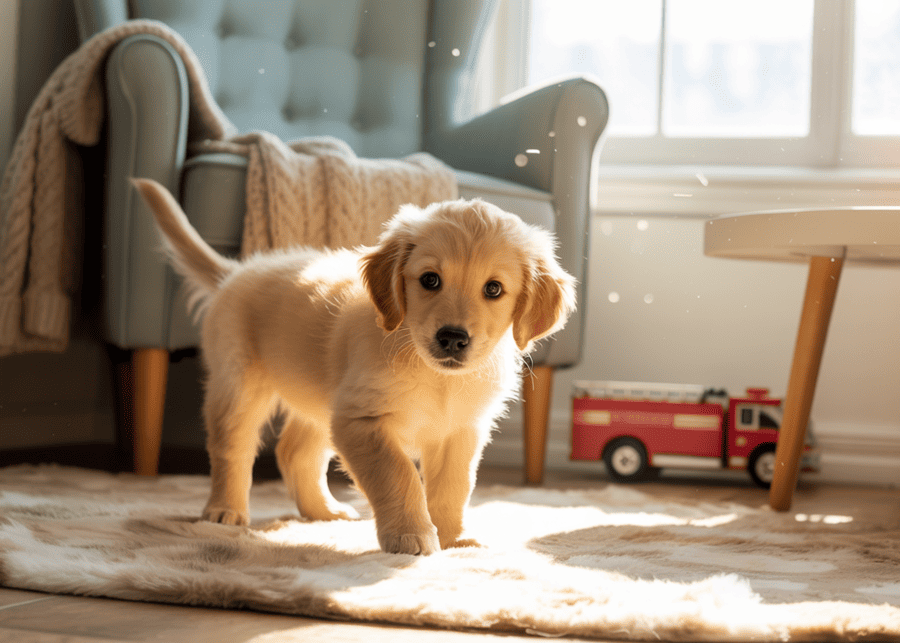
Building this foundation is perhaps the most proactive step you can take to foster independence. A dog that learns the world isn’t scary is a dog that won’t panic when it has to face that world alone for a few hours.
The Critical Puppy Window
During this short period, a puppy’s brain is like a sponge. The experiences they have now will shape their reactions for the rest of their life. A puppy that is kept in a bubble and never exposed to anything new is more likely to grow into a fearful, anxious adult. A puppy that has many positive, controlled new experiences will learn to be resilient and adaptable.
Socialization Beyond Other Dogs
Good socialization is not just about letting your puppy run wild at a dog park. It’s a structured process. It means letting them walk on different surfaces (grass, pavement, carpet), hear different sounds (vacuum cleaner, traffic), and meet different types of people (men, women, children, people in hats). It also includes gently introducing them to short periods of alone time in their crate or a puppy-proofed room, teaching them from day one that solitude is normal and safe.
Building a Foundation of Confidence
Every positive new experience is like a deposit in your dog’s "confidence bank." A well-socialized dog is less likely to be spooked by a loud noise outside or the mail carrier walking by the window. This inner calm is essential for being able to relax when left alone. They have the self-assurance to handle minor daily events without needing you there for comfort.
Conclusion
Ultimately, a happy, independent dog needs the right tools. If your brand aims to provide those solutions—from innovative puzzle toys to durable chews—we are the expert OEM/ODM partner ready to bring your vision to life. Let’s collaborate and create the products that pet owners are searching for.

